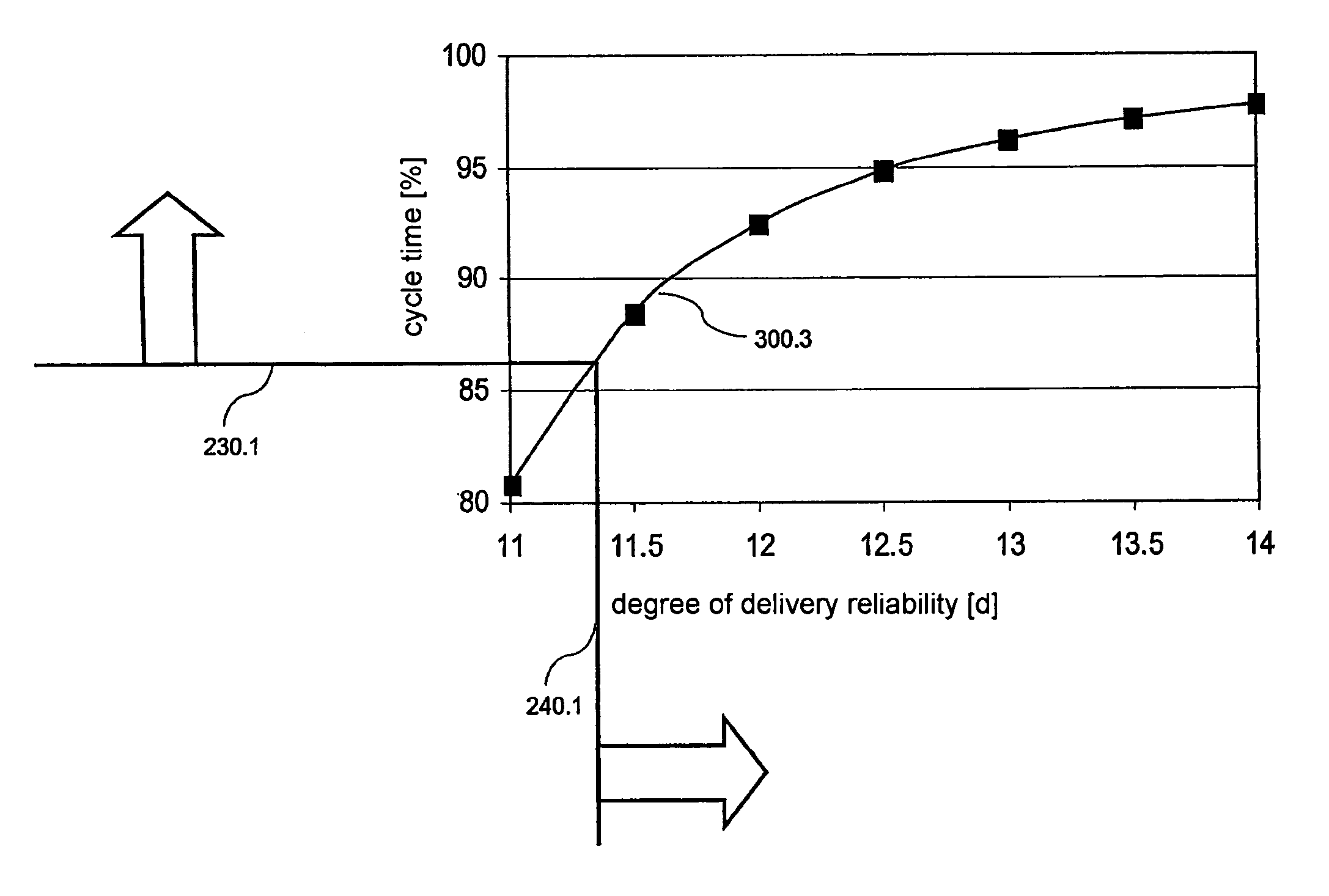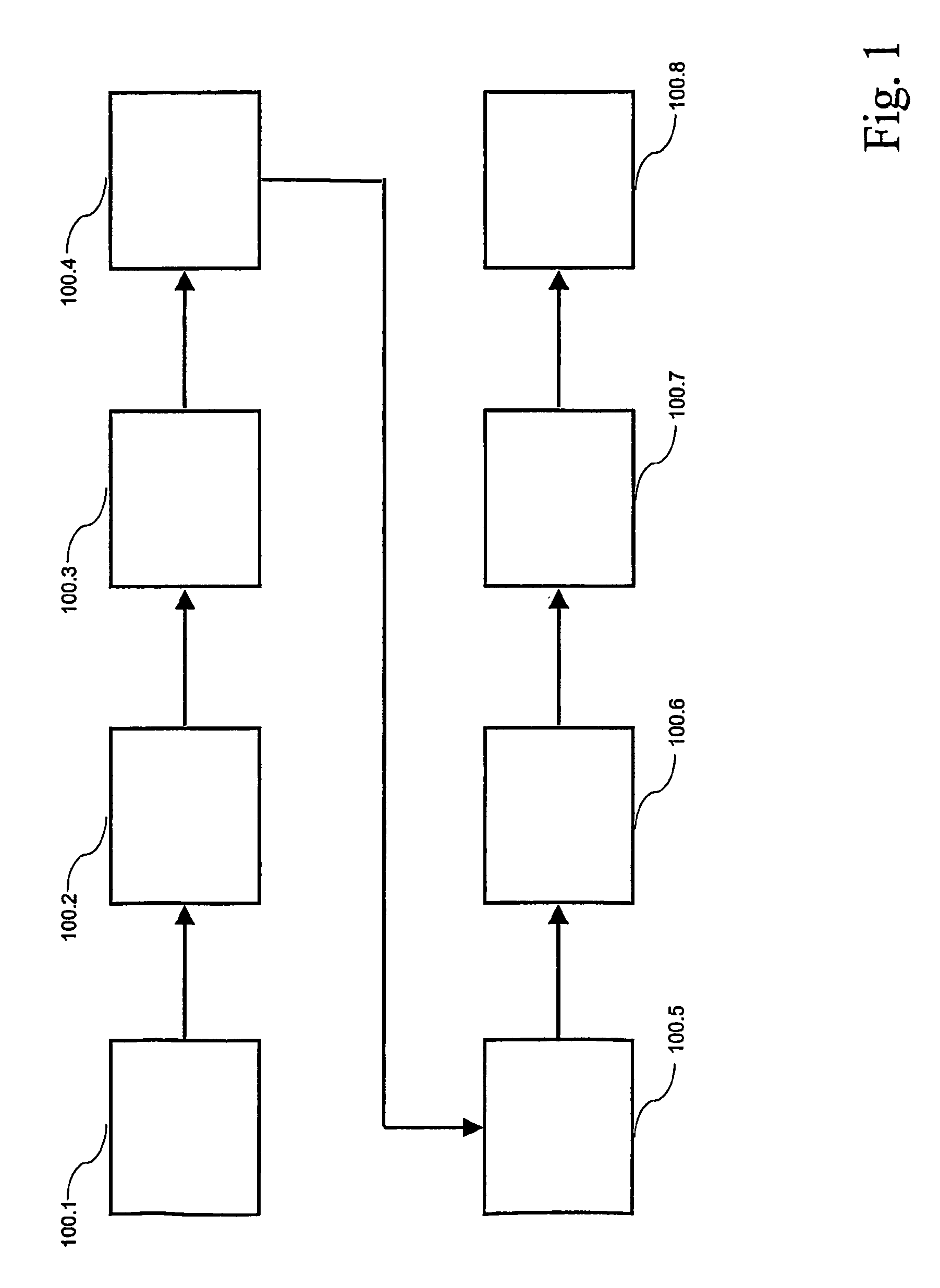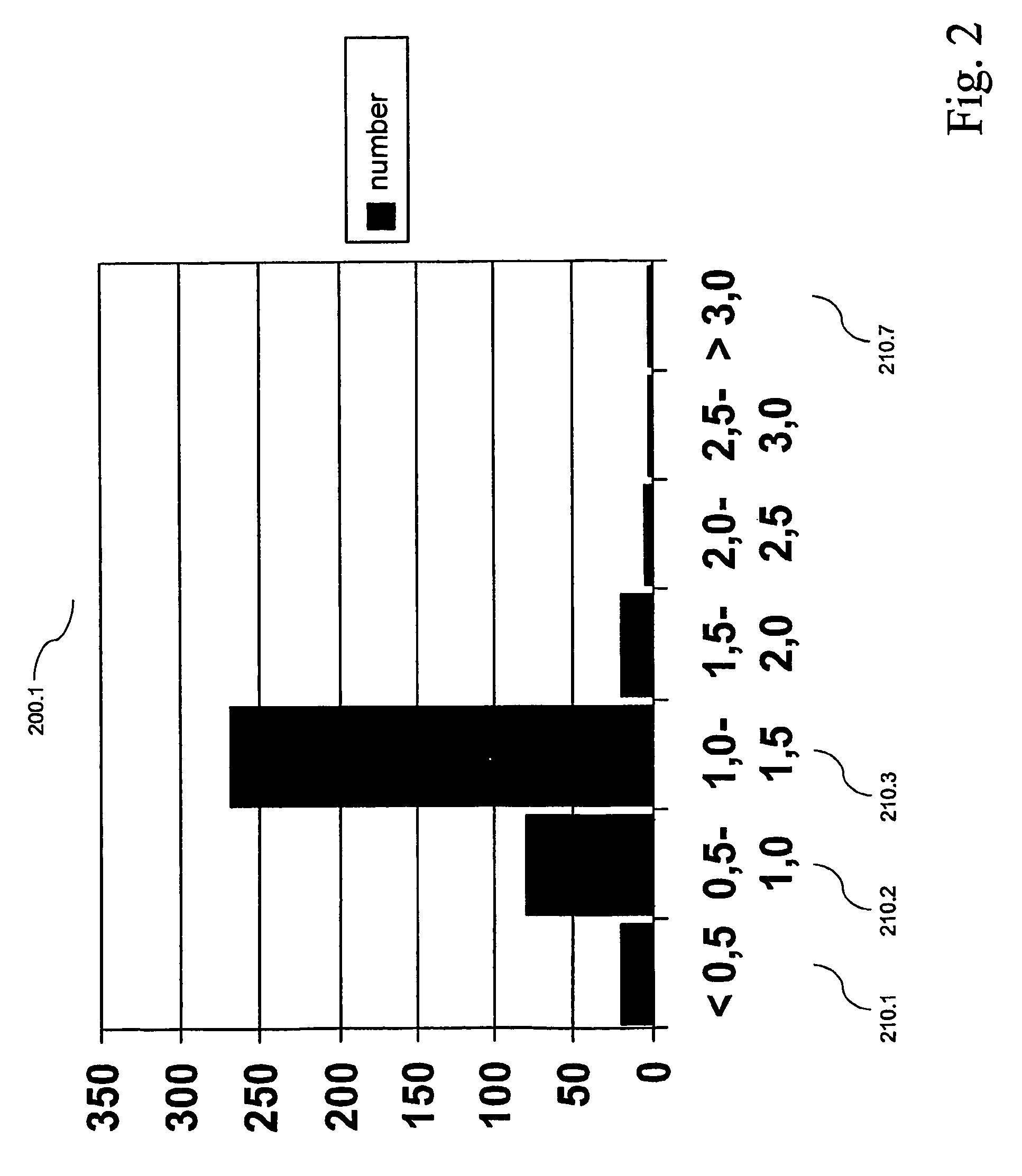Prediction of the degree of delivery reliability in serial production
a technology of serial production and reliability prediction, which is applied in the direction of adaptive control, process and machine control, instruments, etc., can solve the problems of high cost of changes to the real production process, and achieve the effect of increasing inventory, ensuring reliability, and ensuring reliability
- Summary
- Abstract
- Description
- Claims
- Application Information
AI Technical Summary
Benefits of technology
Problems solved by technology
Method used
Image
Examples
Embodiment Construction
[0032]The present invention will be explained using the example of a production process for manufacturing motor vehicles of a particular model, taking into account the following subprocesses of the production process, which are carried out successively in the order of the list:[0033]vehicle scheduling,[0034]preliminary logistics 100.1: the preliminary steps required for production, for example, to inform and / or place orders with vendors,[0035]body assembly 100.2,[0036]surface 100.3, in particular paintwork,[0037]production logistics 100.4, especially taking into account times for[0038]transportation within the production facility,[0039]different working hours of the “trades”,[0040]and arranging the products in the order in which they will be needed in subsequent subprocesses,[0041]interior assembly 100.5 as a subprocess including all assemblies into the interior of the car, such as the dashboard, seats, and trim,[0042]chassis 100.6 as a subprocess including all assemblies from below...
PUM
 Login to View More
Login to View More Abstract
Description
Claims
Application Information
 Login to View More
Login to View More - R&D
- Intellectual Property
- Life Sciences
- Materials
- Tech Scout
- Unparalleled Data Quality
- Higher Quality Content
- 60% Fewer Hallucinations
Browse by: Latest US Patents, China's latest patents, Technical Efficacy Thesaurus, Application Domain, Technology Topic, Popular Technical Reports.
© 2025 PatSnap. All rights reserved.Legal|Privacy policy|Modern Slavery Act Transparency Statement|Sitemap|About US| Contact US: help@patsnap.com



